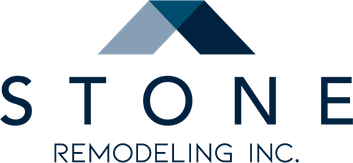
01 Apr FINANCING YOUR NYC HOME RENOVATION
FINANCING YOUR NYC HOME RENOVATION

New Yorkers all dream of the perfect home with a gorgeous kitchen and spectacular bathroom. Until recently, borrowing money for a kitchen remodel, bathroom remodel, or other home improvements meant going to the bank, seeing a loan officer, and hoping for the best. Today, the options are much greater. There are over 200 different loan programs. IDR Construction helps our clients find the best loans, at the best rates, given their credit and income.
IDR Construction suggests:
1. knowing how much money you need and roughly how much you can get from the start; 2. narrowing the myriad loan options down to the ones that match your needs and finances; and 3. concentrating on the lenders that are likeliest to provide the type of loan you want.
How Much Can You Borrow?
You should request an estimate from at least 3 different contractors. Lenders will insist on a specific figure before they work with you. If you’re hiring a contractor, start with a firm bid, broken down into labor and materials. Then add on 10 percent for surprises. Then add a cushion of 20 to 30 percent to be safe. Once you know how much you need, how much will you get? Despite the promises and hype lenders make in their ads and promotional materials, how much you can borrow hinges on your credit rating, the loan-to-value ratio, and your income. These factors also help determine the interest rate, the length of the loan, and whether you’ll pay points. Your credit rating. The best rates and terms go to homeowners with an A rating—no late payments in the last 12 months and no maxed-out credit cards. One or two late payments or overdrawn credit cards probably won’t knock you out of the game, but you might end up with a higher interest rate and a smaller loan.
Loan-to-Value Ratio
To determine the loan amount, lenders use the loan-to-value ratio (LTV), which is a percentage of the appraisal value of your home. The usual limit is 80 percent—or $100,000 for a $125,000
home (.805125,000). Lenders subtract the mortgage balance from that amount to arrive at the maximum you can borrow. Assuming your balance is $60,000, the largest loan that you can obtain is $40,000 ($100,000-$60,000=$40,000). If you have a good credit rating, a lender might base your loan on more than 80 percent of the LTV; if you don’t, you might get only 65 to 70 percent. While many lenders go to 100 percent of the LTV, interest rates and fees soar at these higher ratios.
Your income. If you also have high expenses, a high income level might not mean a larger loan.
Lenders follow two rules to minimize their risk:
•Your house payment and other debt should be below 36 percent of your gross monthly income.
• Your house payment alone (including principal, interest, taxes, and insurance) should be no more than 28 percent of your gross monthly income. The maximum debt-to-income ratio rises to 42 percent on second mortgages. Some lenders go even higher, though fees and rates get expensive — as will your monthly payment. However, a debt-to-income ratio of 38 percent probably is the highest you should consider carrying.
The LTV determines how much you can borrow, and your debt-to-income ratio establishes the monthly payment for which you qualify. Within these two limits, the biggest trade-offs are interest rates, loan term, and points.
Interest rates. The less interest you pay, the more loan you can afford. An adjustable-rate mortgage (ARM) is one way to lower that rate, at least temporarily. Because lenders aren’t locked into a fixed rate for 30 years, ARMs start off with much lower rates. But the rates can change every 6, 12, or 24 months thereafter. Most have yearly caps on increases and a ceiling on how high the rate climbs. But if rates climb quickly, so will your payments.
Loan term. The longer the loan, the lower the monthly payment. But total interest is much higher. That’s why you’ll pay far less for a 15-year loan than for a 30-year loan — if you can afford the higher monthly payments.
Points. Each point is an up-front cost equal to 1 percent of the loan. Points are interest paid in advance, and they can lower monthly payments. But if your credit is less than perfect, you’ll probably have to pay points simply to get the loan.
What Are the Options?
Loan shopping often starts with mainstream mortgages from banks, credit unions, and brokers. Like all mortgages, they use your home as collateral and the interest on them is deductible. Unlike some, however, these loans are insured by the Federal Housing Administration (FHA) or Veterans Administration (VA), or bought from your lender by Fannie Mae and Freddie Mac, two corporations set up by Congress for that purpose. Referred to as A loans from A lenders, they have the lowest interest. The catch: You need A credit to get them. Because you probably have a mortgage on your home, any home improvement mortgage really is a second mortgage. That might sound ominous, but a second mortgage probably costs less than refinancing if the rate on your existing one is low. Find out by averaging the rates for the first and second mortgages. If the result is lower than current rates, a second mortgage is cheaper. When should you refinance? If your home has appreciated considerably and you can refinance with a lowerinterest, 15-year loan. Or, if the rate available on a refinance is less than the average of your first mortgage and a second one. If you’re not refinancing, consider these loan types:
Home-equity loans.
These mortgages offer the tax benefits of conventional mortgages without the closing costs. You get the entire loan up front and pay it off over 15 to 30 years. And because the interest usually is fixed, monthly payments are easy to budget. The drawback: Rates tend to be slightly higher than those for conventional mortgages.
Home-equity lines of credit.
These mortgages work kind of like credit cards: Lenders give you a ceiling to which you can borrow; then they charge interest on only the amount used. You can draw funds when you need them — a plus if your project spans many months. Some programs have a minimum withdrawal, while others have checkbook or credit-card access with no minimum. There are no closing costs. Interest rates are adjustable, with most tied to the prime rate.
Most programs require repayment after 8 to 10 years. Banks, credit unions, brokerage houses, and finance companies all market these loans aggressively. Credit lines, fees, and interest rates vary widely, so shop carefully. Watch out for lenders that suck you in with a low initial rate, then jack it up. Find out how high the rate rises and how it’s figured. And be sure to compare the total annual percentage rate (APR) and the closing costs separately. This differs from other mortgages, where costs, such as appraisal, origination, and title fees, are figured into a bottom-line APR for comparison.
FHA 203(k) Mortgages
These FHA-insured loans allow you to simultaneously refinance the first mortgage and combine it with the improvement costs into a new mortgage. They also base the loan on the value of a home after improvements, rather than before. Because your house is worth more, your equity and the amount you can borrow are both greater. And you can hire a contractor or do the work yourself. The downside is that loan limits vary by county and tend to be relatively low. The usual term is 30 years.
Energy-efficient mortgages (EEMs).
Suppose your home’s R-value is the envy of your block. An EEM from Fannie Mae or elsewhere could boost your debt-to-income ratio by up to 2 percent. Utility bills are lower in energy-efficient homes, so the homeowner can afford a bigger loan.
EEMs have been used for new construction; lenders are now pushing them for existing homes. An EEM requires a determination that your house meets Fannie Mae’s stringent energyefficiency standards.
B and C loans. What if you have less than A credit or don’t fit the usual employment or income mold? B and C loans are a fallback. While many banks offer them, so do credit unions, brokerage houses, and finance companies. You’ll also find lenders that push B and C loans for debt consolidation with enticing introductory rates. Beware, though: Total interest and fees tend to be high because of the lenders’ added risk. And since B and C loans lack consistent requirements and terms, comparing them is difficult.
Getting personal. Houses aren’t the only loan collateral. Stocks, bonds, certificates of deposit, a savings account, and even a pension or retirement account can also help you get a viable personal loan from many brokerages and banks. Although the interest isn’t tax-deductible, the rate can be low enough to make these loans enticing. You also save the usual title, appraisal, and other closing costs of a mortgage.
Which Lender for What?
For a home equity line of credit, the best place to start is your own bank or credit union. Both usually offer lower rates to depositors. Check other sources to be sure. If you get a second mortgage, refinance, or opt for an FHA 203(k) mortgage, you’re better off talking with a mortgage broker. A broker has more loan sources to choose from. When looking for a broker, check with people you know, and check any references you get. Contractors are another source of financing, but be wary: It’s hard enough to choose a contractor and a loan when they’re separate. And be suspicious of contractors who emphasize the monthly payment instead of the total cost of the job.
A borrower’s bill of rights.
Article Z of the federal Truth in Lending Act makes sizing up lenders and loans easier. It requires lenders to disclose interest rate, terms, costs, and variable-rate features in a total APR, a bottom line you can use to compare loans. Here are some other rights to remember:
• If a mortgage lender does not disclose the APR, any application fees must be refunded. You usually get these disclosures on a form with your loan application. If any terms change before closing, the lender must return all fees if the changes make you decide not to proceed.
• You have three days from the day of closing to cancel. Inform the lender in writing within that period and fees are refunded.
Finally, compare those fees carefully. When you meet with a lender, up-front costs will start with a credit report running $50 to $80 and possibly an appraisal, which should cost less than
$300. Some lenders use your property-tax valuation, others won’t. Often, you can reduce lending fees in a competitive market. And if you’re asked for a nonrefundable application fee, beware; reputable lenders try to keep up-front fees low.



Sorry, the comment form is closed at this time.